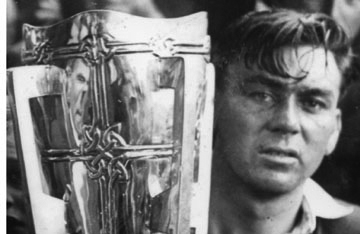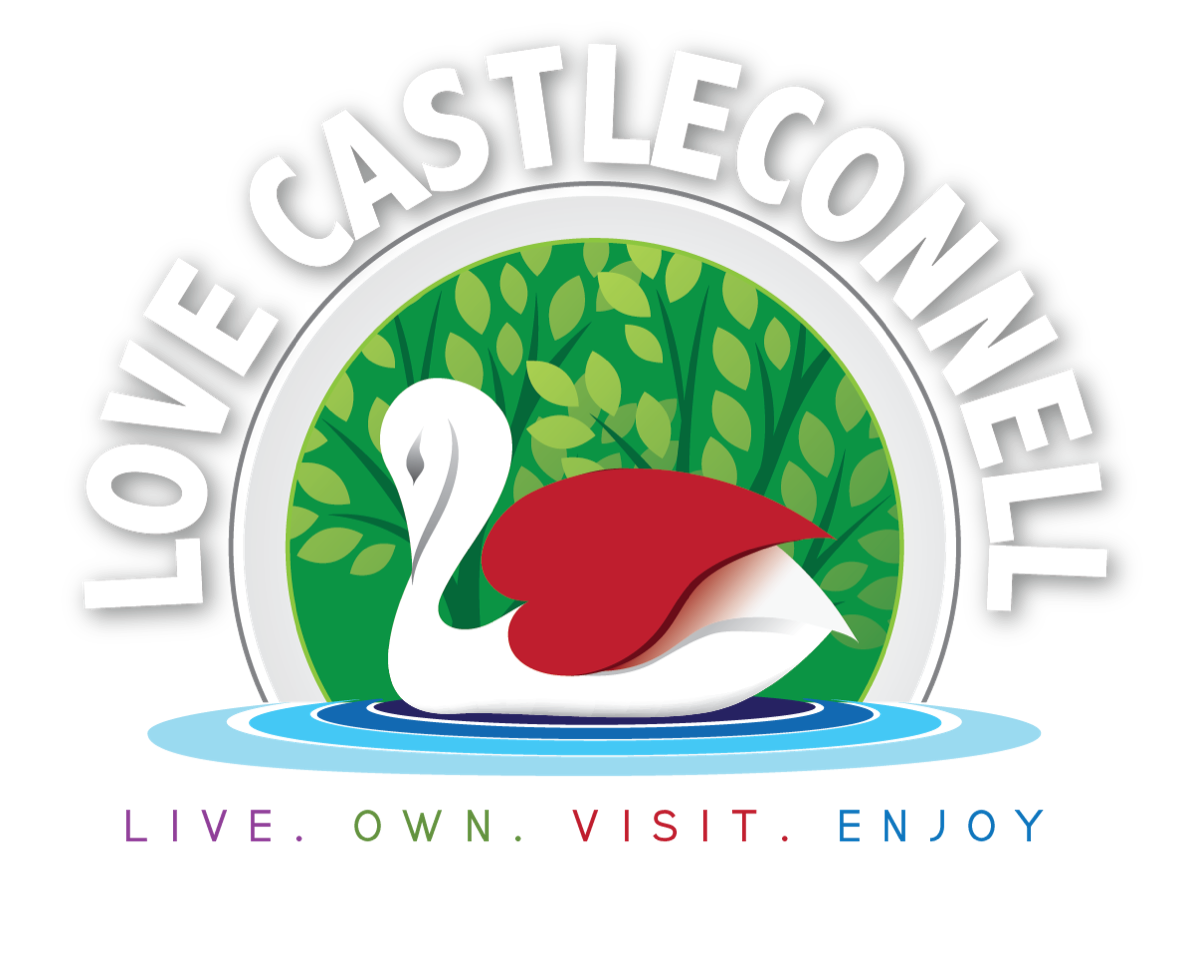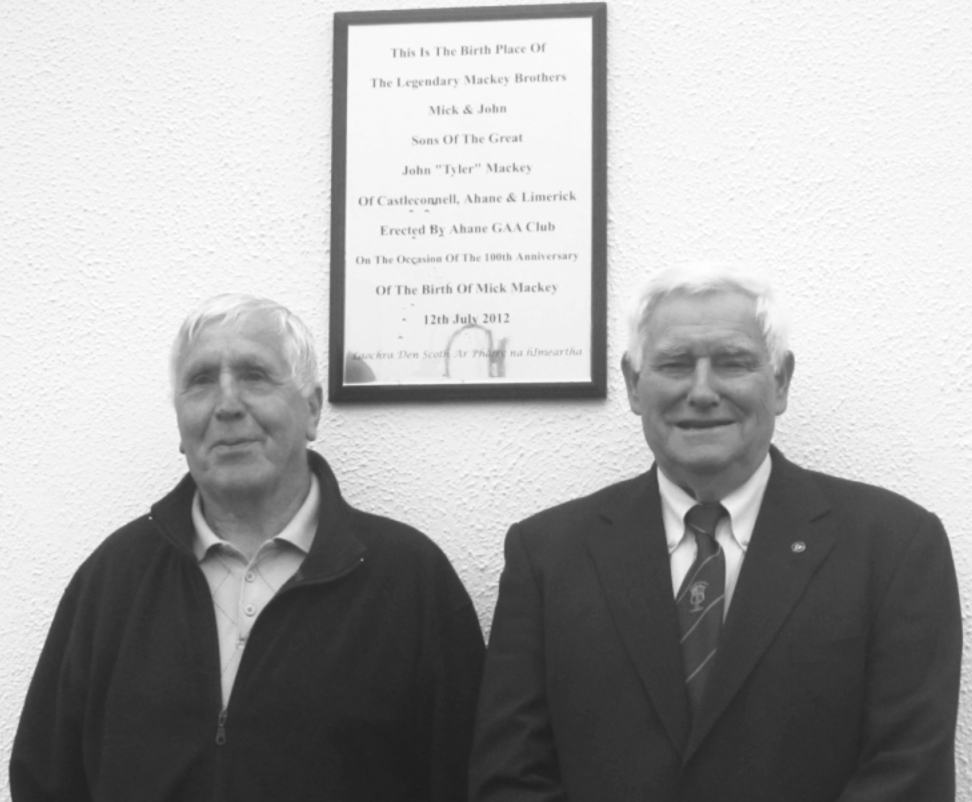
(12th July 1912– 13th September 1982)
– A great captain among captains and a hurling legend among hurlers.
Brian O’Mara
Much has changed in Ireland since Ahane GAA club was founded over 80 years ago in 1926, and if there is something positive we should take from the very difficult economic times through which we are living it is our ongoing appreciation of the importance of tradition and a sense of where you have come from. In Ahane there is no more significant example of our tradition than the legend that is Mick Mackey…..
Mick Mackey was born in Castleconnell, in 1912. He was educated at the local national school in Castleconnell. As was common at the time he received little in the way of a second-level education and left school at an early age due to the economic realities of life in the newly-independent Irish Free State. As an aside, legend has it that the war cry ‘Come on Ahane – The spuds are boilin’ originated from Mrs. Mary Mackey mother of John, Mick and Paddy. It appears that her boys went practicing after Mass in Castleconnell on Sunday and to herald a halt to proceedings, Mrs. Mackey would stand at the kitchen door and shout ‘Come on Ahane – The spuds are boilin’ to make sure her trio were on time for Sunday dinner!
Mick was just fourteen years old when the present Ahane GAA Club was established. He was too young to play on the team but was often to be seen at the field which was located in Knocksentry back then. Little was he to know that the clubs’ new grounds in Newgarden would be opened 70 years later in 1996 and named Mackey Park in his honour. It wasn’t until September 1928 that Mick was asked to wear the club colors for the first time. The occasion was the official opening of the Ennis Road Gaelic Grounds which was the first grounds with the exception of Croke Park to be completely owned by the GAA.
Two junior hurling games served to open the new grounds. In the first South Liberities beat a Young Ireland’s side and Ahane with the help of a young Mick Mackey beat Fedamore. One of his first tournament medals was that secured at Abington, with victories over Ballybricken and Cappamore. The tournament was organized in aid of the Benedictine Fathers of Glenstal Castle, who had some time earlier bought the ancestral home of the Barringtons for conversion to a monastery. Between 1933 and 1939 he played a key role in helping Ahane to an unprecedented seven county titles in-a-row. Not only did he have major success on the hurling field but Mackey also won five consecutive senior county football titles with Ahane between 1935 and 1939. From 1942 until 1949 Ahane captured another unprecedented seven county titles in-a-row, with Mackey featuring prominently in all these victories. Other family names still prominent today in Ahane were also key to the successes of the 30s and 40s… Power, Herbert, Ryan, Roche, Hayes, Hickey, Byrnes, Conway, Keane, Joyce, Scanlon to name but a few.
Mick Mackey first became involved with the Limerick senior hurling team in 1929 when he was listed as a non-playing substitute for the Munster Championship. In 1930 he made his senior debut at the relatively young age of eighteen when he went as a spectator to see Limerick take on Kilkenny in a National Hurling League game. The Shannonsiders were short the full team so Mackey was called upon to line out. Mackey’s brother, John, soon followed him onto the county’s senior team. With Mick’s characteristic flamboyance and John cool and stylish, they formed the perfect partnership and together they would both enjoy a remarkable run of success.
Mackey’s status as one of the all-time greats is self-evident. In a senior inter-county career that lasted for seventeen years he was the star player on the team during Limerick’s golden age of hurling. Mackey won three All-Ireland titles, five Munster titles, five consecutive National Hurling League titles and eight Railway Cup titles with Munster.
Mackey’s importance to Limerick is impossible to overstate. When he burst on the hurling scene in the 1930s he was unquestionably the greatest hurler yet seen. From his usual position at centre-forward Mackey inspired the whole team, and their reputation as great entertainers of hurling owed a lot to his charismatic style and his new hurling techniques. He was physically imposing and his swashbuckling style brought huge crowds to see him play. During his playing days it was Mackey that developed the solo-run style, preferring to bounce the sliothar on the hurley as he charged at defences.
While his exploits on the field are well documented, Mackey has also been the recipient of many awards and honours off the field. In 1980 he was the first recipient of the prestigious All-Time All-Star Award. Mackey was also posthumously honoured in 1984 when he was named, by popular opinion, in the centre-forward position on the GAA Hurling Team of the Century. He was named in the same position on the GAA Hurling Team of the Millennium in 2000.
In retirement from playing, Mackey came to be regarded as one of the true legends of the game and is frequently touted as one of the greatest players of all-time. In his later years he maintained a keen interest in the game. He officiated at games as a referee and as an umpire and he trained the Limerick side, known as “Mackey’s greyhounds,” that defeated warm favourites Clare in the 1955 Munster final. The Mackey Stand at the Limerick Gaelic Grounds is named in his honour.
Mick Mackey died on 13th September 1982. His funeral was one of the biggest-ever for a sportsperson in Ireland with thousands coming to Castleconnell, not alone from all parts of Limerick, but from the heartlands of his traditional rivals, Tipperary, Cork and Kilkenny. He was posthumously honoured on the GAA’s Hurling Team of the Century and on the Hurling Team of the Millennium.
It is fitting therefore that in this centenary year of his birth, that Ahane GAA club have unveiled a plaque to Mick and his brother John in the place of their birth in Castleconnell. The club is also actively working to commission a bronze life size statue in the village of his birth, depicting Mick in the midst of one of his characteristic solo runs as it was Mackey that developed the solo-run style, preferring to bounce the sliothar on the hurley as he charged at defenses.
And so the tradition of Mackey, Castleconnell and Ahane GAA lives on in the playing pitches of Newgarden and the young pretenders that can be viewed on any Summer evening attempting to live up to the heroes of yore, as quoted on Mick and John Mackey’s plaque in Castleconnell – Laochra den scoth ar pháirc na himeartha….so yes Come on Ahane the spuds are boilin’ …..
The plaque in Castleconnell commemorating the Mackey Brothers (Mick and John) and the centenary of Mick Mackey’s birth in 1912.
Friends and relations of the Mackey family, Limerick and Ahane GAA club officials who attended the unveiling of the plaque in Castleconnell village commemorating the centenary of the birth of Mick Mackey.
From left to Right : Mike Flannery, Donal Morrissey, Eddie Wade, Gerry Piggott, Mike O’Riordan, Mary Hassett, Willie Keane, John Mulcahy, Fr. Liam Ryan, Turlough Herbert, Rory Kiely, Brendan Jones, Ann Mulqueen, Vera Mulcahy, Cora Moroney, Audrey Lennon, Ger Mulcahy, Ruth Doyle, Pat Mackey, Pat Moroney, Brendan Heffernan, Grey Mackey, Dennis Murrihy, Johnny O’Keeffe.


